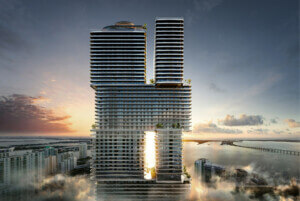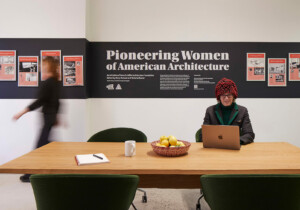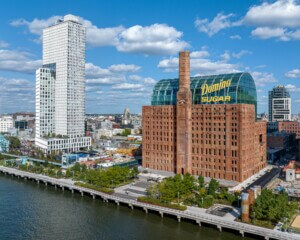Developer Jed Walentas of Two Trees Management Co. stood up in front of a packed house at a community forum in Williamsburg last night to discuss his ambitious new redevelopment plans for the Domino Sugar Factory Refinery. Citing his family’s history in DUMBO, Walentas told the beer-sipping, tattooed crowd that his intention is to “build an extension of the neighborhood” that is “socially contextual.” The new plan incorporates significantly more commercial and office space, which Walentas says won’t financially benefit Two Trees, but speaks to his company’s philosophy and intent to draw from and embrace the historic and cultural fabric of Williamsburg.
While the zoning map doesn’t need to change, the plans still need to go through the ULURP process once again. The new vision for the site puts an emphasis on making the Domino Sugar Refinery a “nucleus” for the neighborhood that would house commercial space and artist studios (some subsidized, some not). An additional building on Grand Street would also be dedicated for small neighborhood retail. Walentas said, like DUMBO, he would fill these space will mom-and-pop stores and promised the audience that there will be no big box stores such as Duane Reade or Starbucks. In addition to commercial, two large community spaces will also be part of the overall plan.
From the get-go, affordable housing has been a critical issue in the redevelopment of Domino Sugar Site, and the initial plans that were approved—prior to Two Trees acquiring the property—promised 660-affordable housing units. Walentas says he’s committed to keeping the affordable housing units, which will be 60 to 80 percent of the area median income (AMI), and identical to market rate apartments. The exact income levels have yet to be determined.
But while Walentas said that the redevelopment will be “contextual,” Vishaan Chakrabarti, partner at SHoP Architects, told the audience that won’t be the case with the design. He acknowledged that the new development isn’t in keeping with Williamsburg’s low-scale, but said, “It will be high no matter what,” referring to any future development to be built on the waterfront.
“It is not contextual,” said Chakrabarti. “But we can start creating a skyline we can be proud of.”
Chakrabarti argued that the height difference between the old and new plans won’t be noticeable to people in the neighborhood and provides several benefits such as more open space inside and a lighter and airier feel. Since the building will be turned perpendicular to the water, he says more light will filter in.
But Hurricane Sandy has forced developers and architects to reshape their approach to waterfront development. Chakrabarti addressed some of the changes they plan on implementing from setting the park back to putting basements above grade and building sloped sidewalks to allow water to drain.
“The park will act as a sponge because it will be made of permeable material,” said Chakrabarti.
The conversation grew heated when a few community members expressed doubt over Two Tree’s commitment to affordable housing and questioned whether the infrastructure in the neighborhood could support this influx of people and new commercial and business sector.
“Our intent is to be a long term owner,” said Walentas. “Our interests are aligned with the community’s interests.”










